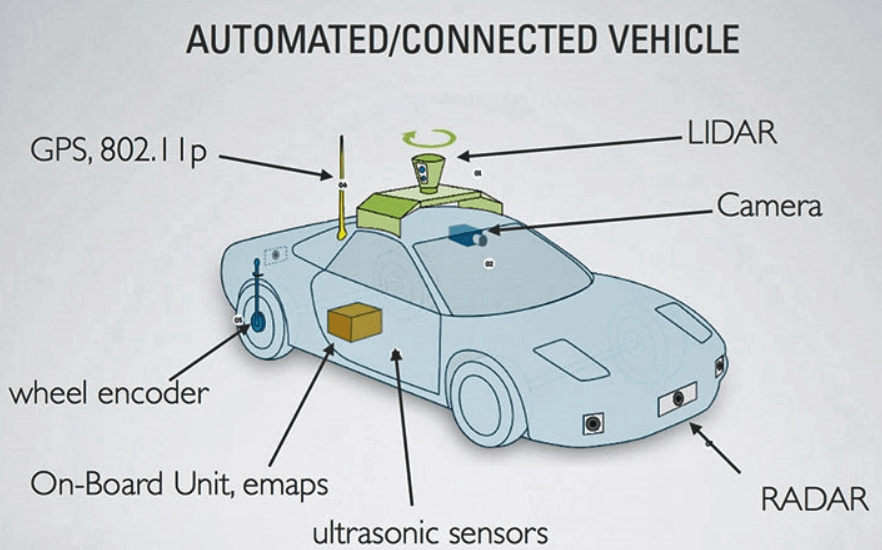Artificial intelligence (AI) is employed to replicate real-world scenarios, facilitating safety testing for autonomous vehicles. An in-depth analysis conducted by Stanford researchers reveals that while the algorithms show promise, there are still areas that require further development and improvement.
The possibilities of Artificial Intelligence are beyond our imagination. One of the most prominent areas of AI potential is autonomous driving. Dating back to ancient Greece, the concept of machines simulating human cognition has evolved into the field we know today as Artificial Intelligence, or AI for short. In recent years, AI technology has made tremendous progress, expanding its applications across various domains, including agriculture, medicine, voice assistance, and, notably, autonomous driving.
The fusion of AI and autonomous vehicles marks a monumental leap for both the automobile and AI industries. The potential of Artificial Intelligence is boundless, with autonomous driving standing as a prominent example. Notably, industry giants like Tesla, Waymo, and Alibaba have made remarkable strides toward realizing the vision of AI-powered fully autonomous vehicles. This extraordinary progress signals a promising future for the intersection of AI and transportation.
What are Autonomous Vehicles?
Automated cars are vehicles that possess the remarkable ability to mimic the actions of skilled human drivers, all without any physical intervention from humans. These cutting-edge vehicles possess the capacity to intelligently interpret obstacles and road signs, effortlessly navigating their surroundings with utmost safety. Through their reliance on advanced sensors, machine learning systems, actuators, and intricate algorithms, autonomous cars gracefully execute commands, ever-ready to listen and respond.
AI and Autonomous Driving
Artificial Intelligence has played a pivotal role in revolutionizing the development of autonomous cars, marking it as the most influential driving force. While the first autonomous cars emerged during the 1980s, it is through AI that we have witnessed the realization of levels 4 and 5, where cars achieve full autonomy.
To realize autonomous driving, AI must possess the capability to plan and execute actions independently of human intervention. Equipped with functions akin to those of a human driver, the AI showcases its proficiency in recognition, decision-making, sensory perception, and data modeling through deep learning algorithms. These advancements empower AI-driven vehicles to operate autonomously, paving the way for a revolutionary driving experience.
AI in Building Infrastructure for Autonomous Vehicles
To achieve full autonomy, a car requires essential components: a vision-enabled camera, a communication system, and sensors. These features enable the car to gather data and operate independently. The integration of AI in establishing this infrastructure for autonomous vehicles is pivotal. It empowers these features to emulate human-like characteristics by facilitating perception, cognition, and decision-making based on the data collected through the vehicle’s integrated components.
How Should Autonomous Vehicles Make Life-or-Death Decisions?
There is a growing concern among drivers regarding the safety of riding in autonomous cars. The question of how these vehicles ensure passenger safety in life or death situations is of utmost importance and warrants thorough exploration. With numerous possible scenarios in which AI-driven decision-making comes into play, it is crucial to design autonomous vehicles to proactively avoid such circumstances instead of attempting to program specific reactions in these high-stakes situations.
Many companies adopt a similar approach when developing autonomous cars. They employ various measures to ensure safer navigation, such as training cars to recognize obstacles and navigate around them. Additionally, in traditional cars, advanced AI-powered tools like blind spot detection alert drivers if another vehicle is in their blind spot. Moreover, Electronic Stability Control significantly reduces the risk of skidding and losing control in hazardous weather conditions by selectively applying traction control to specific wheels of the vehicle. Overall, these innovative advancements prioritize safety and enhance the driving experience.
How Autonomous Cars Generate Their Data

To enable autonomous vehicles to perceive their surroundings, Artificial Intelligence must possess the ability to visually process information. This task is achieved through the utilization of advanced technologies such as cameras, RADAR, and LIDAR. Strategically positioned throughout the vehicle, these sensors and cameras provide the AI with crucial data, enabling it to make informed decisions. Now, let’s explore each component of this system and their respective roles in collecting data for autonomous cars.
Sensors
The sensors track the car’s position and proximity to vehicles, pedestrians, and objects on the road. Autonomous vehicles rely on two sensors: the Light Imaging Detection and Ranging (LIDAR) sensor and the Radio Detection and Ranging (RADAR) sensor. These sensors play a crucial role in ensuring safety and awareness on the road.
Cameras
Cameras, referred to as image sensors, play a crucial role in autonomous vehicles. They perceive and recognize objects within their field of view, enabling identification, classification, and assessment of the distance between the vehicle and the objects.
The Importance of Data Annotation in Automotive AI Projects
The car’s cameras and sensors enable it to perceive its surroundings, but this visual capability would be rendered futile without the crucial process of data annotation.
Data annotation plays a pivotal role in automotive AI projects as it enables precise object identification. By interpreting visual information, annotations empower effective utilization. Without accurate data annotation, the AI implemented in vehicles would be susceptible to accidents and unsafe for operation. Enhanced annotation quality directly corresponds to improved AI accuracy and minimizes the risk of crashes.
How Automotive Artificial Intelligence Algorithms are Used for Self-Driving Cars
AI algorithms in the automotive industry drive the evolution of self-driving cars. By leveraging real-life datasets, these algorithms are trained to learn from observations and make informed decisions. This training process enables cars to develop and hone their decision-making abilities, paving the way for a safer and more efficient future on the roads.
Supervised vs Unsupervised Learning
AI algorithms in the automotive industry can acquire knowledge through both supervised and unsupervised learning techniques.
- Supervised Learning involves the analysis of data by leveraging training to decode its meaning accurately.
- Unsupervised Learning refers to the process where AI autonomously analyzes received data, without external instructions or input on how to do so.
Given the necessity of data classification in driverless cars, supervised learning stands as the favored machine learning approach for autonomous vehicles.
Machine Learning Algorithms Used by Self Driving Cars
Self-driving cars can utilize a variety of machine learning algorithms, which can be categorized into one or more of the following groups:
- Regression Algorithms –- Proficient in anticipating events through a comprehensive evaluation of the interplay between multiple variables and assessing their impact across various magnitudes.
- Decision Matrix Algorithms – This analysis entails the evaluation, identification, and rating of the performance of the relationship between sets of values.
- Pattern Recognition Algorithms – These algorithms are commonly referred to as classification algorithms. They possess the ability to identify patterns within data sets and effectively categorize them.
- Cluster Algorithms – When faced with cases where image detection or pattern recognition algorithms struggle, the art lies in uncovering the underlying structure from the data points. This enables us to decipher and classify even those elusive or challenging images that would have otherwise remained undeciphered.
Out of the myriad algorithms in each category, five stand out as having the greatest potential for autonomous cars.
Histogram of Oriented Gradients (HOG)
HOG, similar to the Scale Invariant Feature Transform Algorithm, is a feature descriptor utilized for object detection. By analyzing the location of an image or object, it discerns its movement characteristics. The process involves dividing the image into cells and calculating a histogram of oriented gradients for each cell. Finally, the results are normalized and a descriptor is generated for each cell.
YOLO (You Only Look Once)
YOLO, an advanced machine learning algorithm, utilizes regression techniques to efficiently detect and categorize objects. By analyzing the AI’s visual input, YOLO groups object and assign distinctive features, enhancing the AI’s recognition capabilities. This sophisticated algorithm enables efficient and accurate object identification with precision and effectiveness.
Final Words
The public is watching closely as further advancements are made toward fully autonomous vehicles. With the progress that Artificial Intelligence has made in the last decade, it is only a matter of time until cars are safely driving themselves through streets across the world.


2 thoughts on “How AI Is Making Autonomous Vehicles Safer”